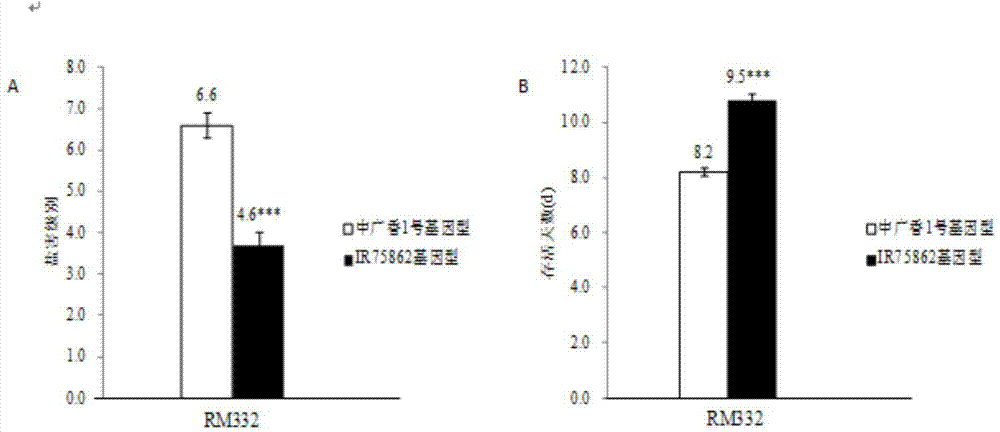Rice seedling-stage salt-tolerant gene qST11 and molecular marker method thereof
A salt-tolerant gene and molecular marker technology, applied in the fields of rice stress resistance breeding and molecular genetics, to facilitate cross-breeding and speed up the breeding process
- Summary
- Abstract
- Description
- Claims
- Application Information
AI Technical Summary
Problems solved by technology
Method used
Image
Examples
Embodiment Construction
[0020] The present invention will be further described below in conjunction with specific embodiment, wherein the method used is conventional method unless otherwise specified.
[0021] 1. Single-marker mapping of new salt-tolerant genes
[0022] 1. Test materials
[0023] The glutinous rice variety IR75862 introduced from the International Rice Research Institute and the high-yield and high-quality indica-type conventional rice Zhongguangxiang 1 were used to construct a hybrid combination, and Zhongguangxiang 1 was used as the recurrent parent to construct an introduced line population containing 200 families.
[0024] 2. DNA extraction, PCR amplification and gel electrophoresis
[0025] Referring to the DNA extraction method of Temnykh et al. (2000), genomic DNA was extracted from each individual plant. 133 polymorphic SSR markers between the parents were selected and primers were synthesized. Polymerase chain reaction (PCR) was carried out using the genomic DNA of each i...
PUM
 Login to View More
Login to View More Abstract
Description
Claims
Application Information
 Login to View More
Login to View More - R&D
- Intellectual Property
- Life Sciences
- Materials
- Tech Scout
- Unparalleled Data Quality
- Higher Quality Content
- 60% Fewer Hallucinations
Browse by: Latest US Patents, China's latest patents, Technical Efficacy Thesaurus, Application Domain, Technology Topic, Popular Technical Reports.
© 2025 PatSnap. All rights reserved.Legal|Privacy policy|Modern Slavery Act Transparency Statement|Sitemap|About US| Contact US: help@patsnap.com



